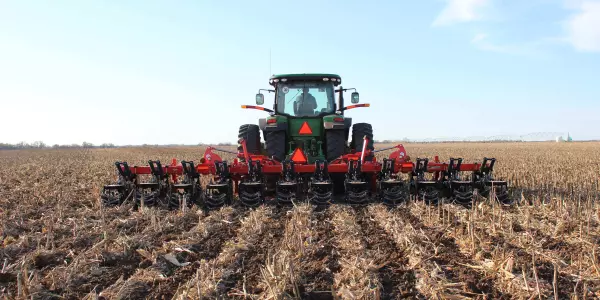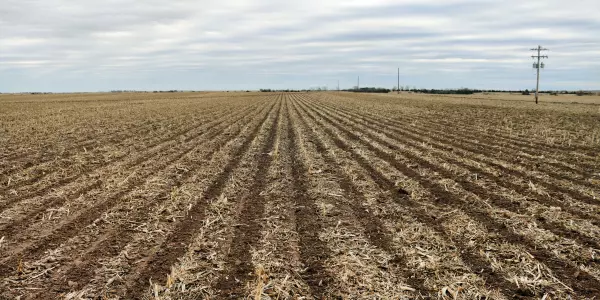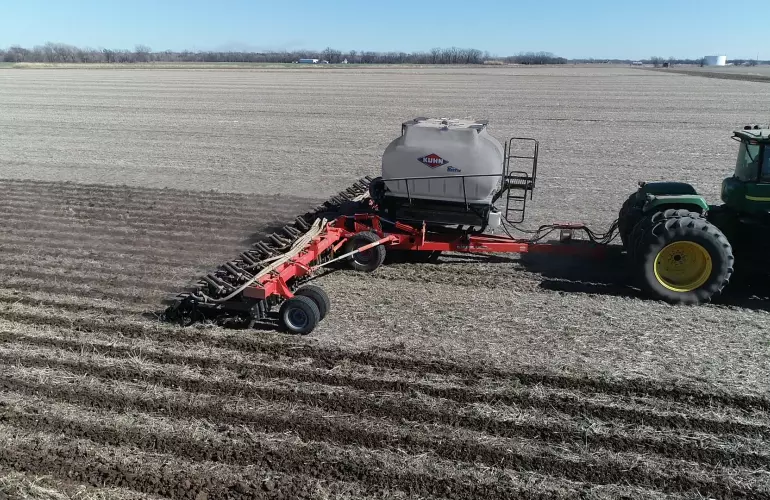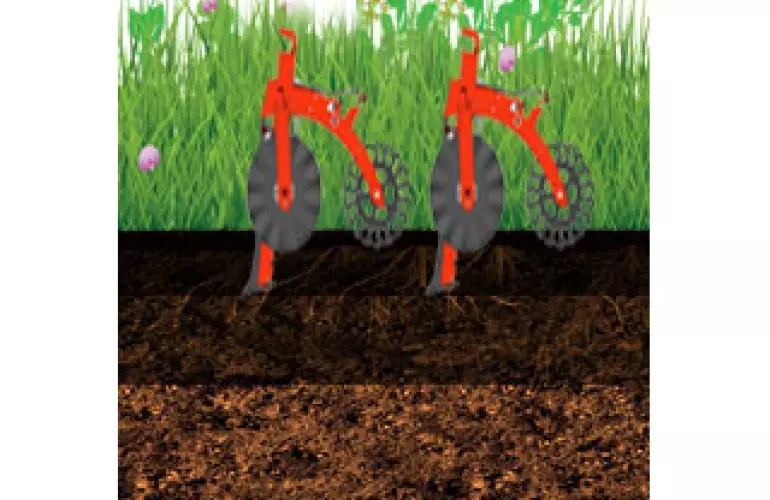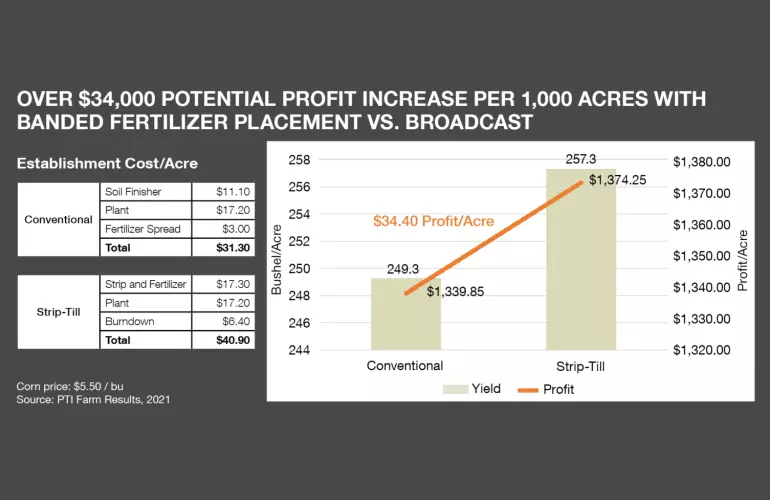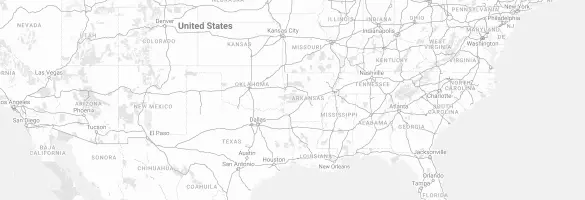
Gladiator® 1210
The pull-type Gladiator® 1210 is available in 8, 12 & 16 row models with 30" row spacing. 445 metric tires and heavy-duty walking axles allow up to 9 tons of dry or 1,600 gallons of liquid fertilizer to be carried on the chassis.
The pull-type Gladiator® 1210 is available in 8, 12 & 16 row models with 30" row spacing. 445 metric tires and heavy-duty walking axles allow up to 9 tons of dry or 1,600 gallons of liquid fertilizer to be carried on the chassis.
The 3-point mounted Gladiator® is available with 4 to 16 rows, with 30" to 40" spacing. The innovative folding toolbar increases transport stability and reduces folded dimensions. A variety of fertilizer options are available to suit a wide range of strip-till nutrient programs.
The Gladiator 1210C offers a configurable, rigid toolbar for row spacing combinations not offered within the current Gladiator 1210M range. Rigid toolbar lengths of 139", 221" and 301" are available. Each is capable of being equipped with 2 to 8 ST-PRO™ II row units based on the desired spacing.
KUHN Krause ST-PRO™ II row units create a uniform, residue-free strip with precise and consistent tillage depth control. These row units are easily adjusted without tools and require no daily maintenance.
Strip tillage is a precision tillage practice where only the band of soil in which the seed will be planted is cultivated and is commonly used for row-crops such as corn, cotton, and soybeans. Working only this strip of soil instead of the entire field speeds up the tillage operation, reduces labor requirement, allows precise fertilizer placement in the root growing zone and helps manage moisture.
The strip-tillage toolbar is equipped with row units for preparing the strip. The row units will be on a row spacing that matches the crop to be planted. A good row unit will combine 5 essential elements:
Strip-till systems allow the operator to reduce the number of tillage operations to one pass thereby reducing the number of man-hours required for seedbed preparation. Additionally, strip-till conserves moisture because the entire field is not tilled, so evaporative losses are reduced. Conversely, in wet conditions the untilled bands of soil between strips help reduce run-off thereby preventing soil erosion. Placing nutrients in the strip maximizes efficiency and availability for the plant. Studies have shown significant yield improvement compared to broadcast fertilizer in a conventional tillage or no-till system and the ability to reduce application rates for increased farm profitability.
Strip-till often takes place in the fall, giving the strips time to mellow over the winter ahead of planting. However, where field conditions are not suitable for fall strip tilling, strips may be made in the spring. Usually in spring, strip tillage depth is shallower to avoid bringing cold, wet soil to the surface, whereas in fall it will be deeper to have a greater volume of worked soil in the seedbed. Regardless of fall or winter strip tillage, creating a strip with a raised berm is an advantage. After fall tillage, the raised strip can weather over winter reducing the risk that the strip becomes a depression by spring. After spring tillage, the raised strip will dry out and warm up faster than the area between the strips, allowing planting to take place sooner while improving seed germination and emergence.
Making the transition to strip tillage requires careful planning and many growers choose to have a custom operator strip-till a couple of fields before making the change themselves. The strategy to make the change is going to vary depending on whether a grower is changing from a no-till or more conventional tillage system. In either situation, almost all customers find it necessary to utilize GPS guidance for strip-till as the same maps created by the strip-till operation will be used by the following planting operation for precise placement of the seed in the strips. Field condition should be evaluated, and compaction issues must be resolved – the strip-till unit is not a ripper! The strip tillage system is going to replace all other tillage operations across the field, so consideration should be given to residue management and how a good seedbed will be created in a single pass. Most prospective strip-till operators will evaluate multiple strip-till toolbars before deciding which will work best for them. The overall crop nutrient strategy also needs to be considered. Strip tillage provides the opportunity to begin splitting fertilizer applications and “spoon feeding” the crop rather than fewer larger applications of nutrient.
Strip tillage is not necessarily better than vertical tillage, they are both environmental tillage systems with their respective agronomic and economic benefits and attributes. Both can manage residue, create good seedbeds, incorporate nutrients, manage moisture, and provide agronomically sound growing conditions for crops. The contrast is largely the different management styles associated with each. Vertical tillage equipment (like a KUHN Krause Excelerator®) is more broad acre focused with limited opportunity for variable fertilizer placement, while strip tillage equipment is more precision acre focused with many opportunities for variable rate fertilizer placement on every acre. Farmers can be successful with both methods, but each requires a slightly unique style of management.
Whereas more conventional tillage methods focus on tilling the entire field, and are generally associated with broadcast fertilizer application, the aim of strip tillage is to micro-manage just the strip of soil where the seed will be planted and applying fertilizer only in the root zone. Conventional tillage methods incorporate residue into the soil, while strip tillage manages the residue into the areas between the strips for moisture management and weed suppression.
Strip tillage has been proven to provide yield increases compared to no-till crop production, particularly in corn production. Studies have also shown that plant utilization of nutrients is improved by precise banding in the root zone, and that it can be possible to reduce overall fertilizer application to reduce crop production cost and improve profitability.
